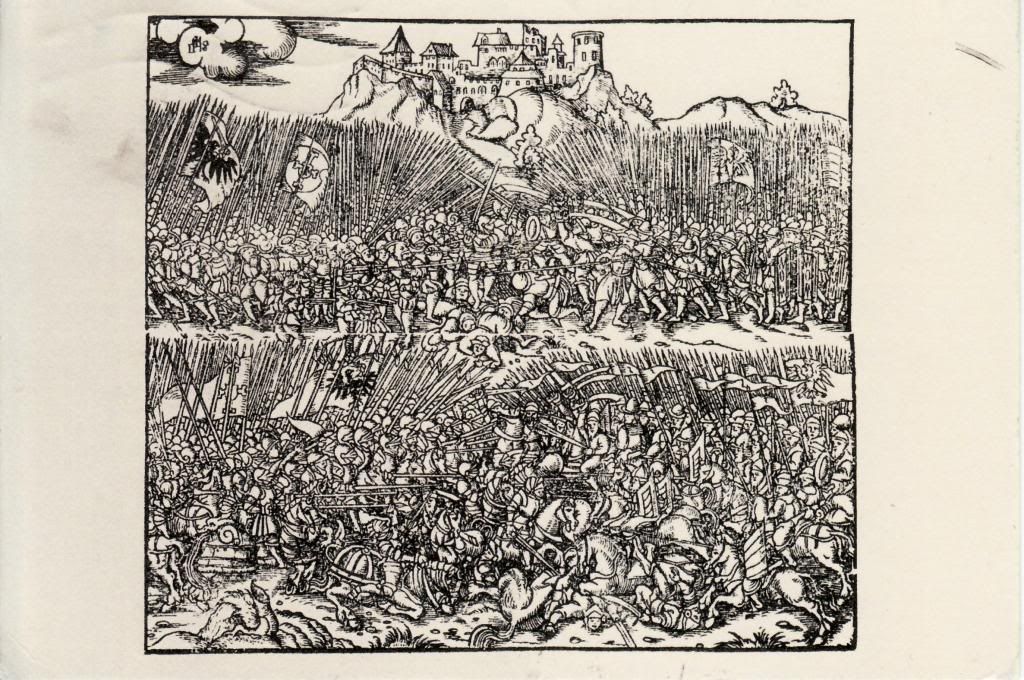"The Battle of Grunwald", engraving from "The Chronicles of the whole world" (1554) by Marcin Bielski (1494-1575)
 The Battle of Grunwald or First Battle of Tannenberg was fought on 15 July 1410, during the Polish–Lithuanian–Teutonic War. The alliance of the Kingdom of Poland and the Grand Duchy of Lithuania, led respectively by King Jogaila (Władysław Jagiełło) and Grand Duke Vytautas (Witold), decisively defeated the Teutonic Knights, led by Grand Master Ulrich von Jungingen. Most of the Teutonic Knights' leadership were killed or taken prisoner. While defeated, the Teutonic Knights withstood the siege on their fortress in Marienburg (Malbork) and suffered only minimal territorial losses at the Peace of Thorn (1411) (Toruń). Territorial disputes continued until the Peace of Melno was concluded in 1422. However, the Knights never recovered their former power and the financial burden of war reparations caused internal conflicts and an economic downturn in their lands. The battle shifted the balance of power in Eastern Europe and marked the rise of the Polish–Lithuanian union as the dominant political and military force in the region.
The Battle of Grunwald or First Battle of Tannenberg was fought on 15 July 1410, during the Polish–Lithuanian–Teutonic War. The alliance of the Kingdom of Poland and the Grand Duchy of Lithuania, led respectively by King Jogaila (Władysław Jagiełło) and Grand Duke Vytautas (Witold), decisively defeated the Teutonic Knights, led by Grand Master Ulrich von Jungingen. Most of the Teutonic Knights' leadership were killed or taken prisoner. While defeated, the Teutonic Knights withstood the siege on their fortress in Marienburg (Malbork) and suffered only minimal territorial losses at the Peace of Thorn (1411) (Toruń). Territorial disputes continued until the Peace of Melno was concluded in 1422. However, the Knights never recovered their former power and the financial burden of war reparations caused internal conflicts and an economic downturn in their lands. The battle shifted the balance of power in Eastern Europe and marked the rise of the Polish–Lithuanian union as the dominant political and military force in the region.The battle was one of the largest battles in Medieval Europe and is regarded as the most important victory in the history of Poland, Belarus and Lithuania. It was surrounded by romantic legends and nationalistic propaganda, becoming a larger symbol of struggle against invaders and a source of national pride. During the 20th century, the battle was used in Nazi and Soviet propaganda campaigns. Only in recent decades have historians made progress towards a dispassionate, scholarly assessment of the battle reconciling the previous narratives, which differed widely by nation.

No comments:
Post a Comment